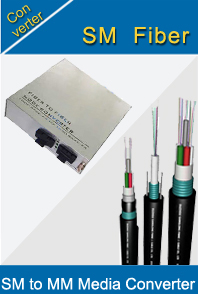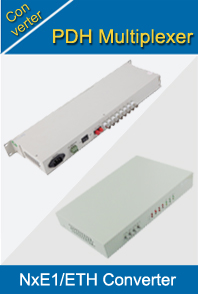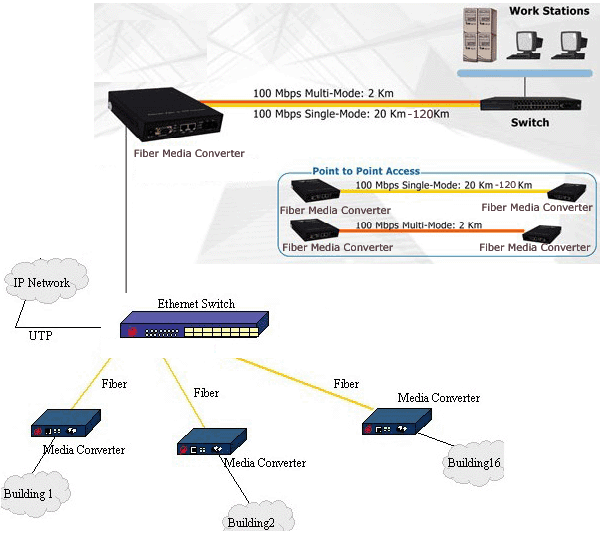-

- Sopto Home
-

- Special Topic
-

- Converter Knowledge
-

- Protocol Converters Achieve Interoperability
Converter Knowledge
- Form Factors and Application of Ethernet Media Converter
- Ethernet over 4 E1 Converter Brief Introduction
- What is the Difference between RS232 and RS485 Serial Interfaces
- What is the Difference between RS232 and RS485 Serial Interfaces
- How to Convert an Analog Telephone to VoIP Protocol?
- How to Find the Internet Protocol Address and Media Access Contr
- How to Convert from Fast Ethernet to Fiber Optics?
- How to Connect a Fiber Converter?
- How to Convert Ethernet to Fiber Media Converters?
SOPTO Special Topic
Certificate



Guarantee
Except products belongs to Bargain Shop section, all products are warranted by SOPTO only to purchasers for resale or for use in business or original equipment manufacturer, against defects in workmanship or materials under normal use (consumables, normal tear and wear excluded) for one year after date of purchase from SOPTO, unless otherwise stated...
Return Policies
Defective products will be accepted for exchange, at our discretion, within 14 days from receipt. Buyer might be requested to return the defective products to SOPTO for verification or authorized service location, as SOPTO designated, shipping costs prepaid. .....
Applications
An Ethernet to Fiber Media Converter can also be used where there is high level of electromagnetic interference or EMI which is a common phenomenon found in industrial plants. This interference can cause corruption of data over copper-based ethernet links. Data transmitted over fiber optic cable however is completely immune to this type of noise. An Ethernet to Fiber Optic Converter therefore enables you to inter-connect your copper-ethernet devices over fiber ensuring optimal data transmission across the plant floor.
SOPTO Products
- Fiber Optic Transceiver Module
- High Speed Cable
- Fiber Optical Cable
- Fiber Optical Patch Cords
- Splitter CWDM DWDM
- PON Solution
- FTTH Box ODF Closure
- PCI-E Network Card
- Network Cables
- Fiber Optical Adapter
- Fiber Optical Attenuator
- Fiber Media Converter
- PDH Multiplexers
- Protocol Converter
- Digital Video Multiplexer
- Fiber Optical Tools
- Compatible
Related Products
Performance Feature
Converter Knowledge
Recommended


Protocol Converters Achieve Interoperability
A protocol converter, referred to as protocol translator, accustomed to convert standard or proprietary protocol of one device to the protocol ideal for the other device or tools to offer the interoperability, with every protocol based on many factors. It is much like a language translator, translates messages, or data streams, between networks make it possible for both networks to simply interpret the data. Typical types include E1 to Ethernet, V35 to Ethernet and E1 to V35. Variety protocols utilized in different fields like Power Generation, Transmission & Distribution, Oil & Gas, Automaton, Utilities, AMR, and Remote Monitoring applications.
Structure Of Protocol Converter
The general architecture of the protocol converter includes an internal master protocol communicating towards the external slave devices and the data collected is used to update the internal database of the converter. When the external master requests for data, the internal slave collects data in the database and send it to the external master.
The end result of the protocol converter is to allow the protocol of 1 machine communicate with the protocol of another, increasing the quantity of machines the network can use. As the penalties normally are slight, conversion in one protocol to another may slow the bond speed, especially if the converted protocol innately has a lower data rate. Most converters possess a database with several protocols, and this database is used to transform the initial protocol to a different format.
.jpg)
Different Protocols Of Protocol Converter
The majority of networks have many machines using different protocols, and these protocols dictate the way a machine acts. These protocols are based on several factors, including data rate, encryption methods, file and message formats and associated service, because some services exclusively use one protocol. A protocol converter is given the job of taking this protocol and changing it to a different one.
Most protocol converter units are programmed to understand a number of different protocols, and these units use an internal database to trace all the protocols. This database will store all of the factors associated with the known protocols, and the database is also tasked with helping this device understand what must be changed to change one protocol to another. Unlike regular databases, which may be manually updated, this database typically is locked from users.
Options that come with Protocol Converter
Protocol converters provide physical conversion between ITU-T G.703 standard E1 interface and standard V.35, RS232, RS422 converter, RS485 converter and 10M/100M Ethernet interface, offering security and seamless link for communication between different devices with various interfaces. Protocol supports IEEE 802.3, IEEE 802.1 P, 802.1Q (VLAN). The interface converter transfers data with V.35, RS232, RS485, RS422 output. E1 interface works with ITU-T G.703, G.704 and G.823 supporting BNC 75Ω/unbalance impedance and RJ45 120Ω/balance impedance with speed rates range of 64K~2.048Mbps. Single and multi E1 and framed E1 (FE1) channels; data interface and Ethernet interface; mini rack and 19 inch rack; 220V, 110V, 48V power supply or both are optional, in addition to TDM over IP devices.
Protocol converter series may put into action the actual transformation among single E1 protocol port in addition to protocol ports of V.35, V.24, RS232 Ethernet converter or Ethernet within the tranny system; it may be thoroughly utilized in numerous being able to access issues with regard to providers in addition to commercial clients, for instance DDN, ATM, and for that transformation in between router and E1 port, or perhaps the actual occasion exactly where Ethernet tend to be interconnected from divided internet sites through SDH or even additional tranny gear.
A protocol converter usually is helpful. Protocols are software installed on the routers; they're widely used in a number of industries for applications for example building and process automation. Protocol converters also are employed for substation automation, or a system for managing and controlling equipment within an electrical power system.
For more information, please browse our website or contact a Sopto representative by calling 86-755-36946668, or by sending an email to info@sopto.com.




